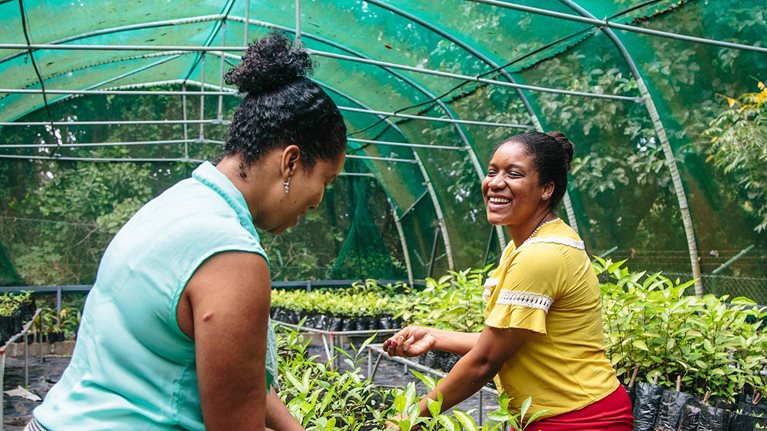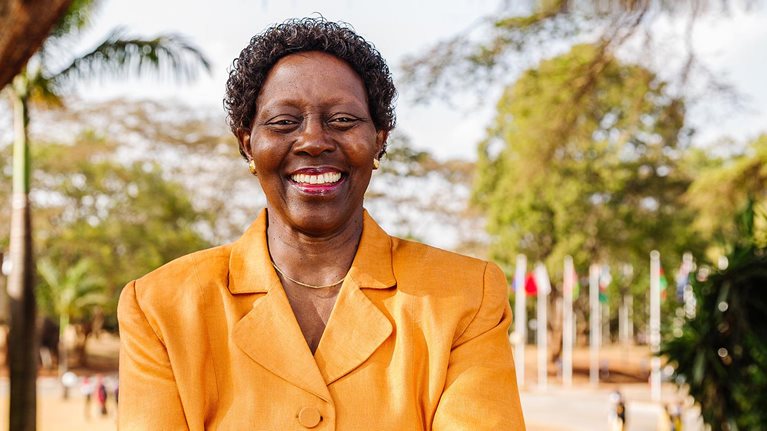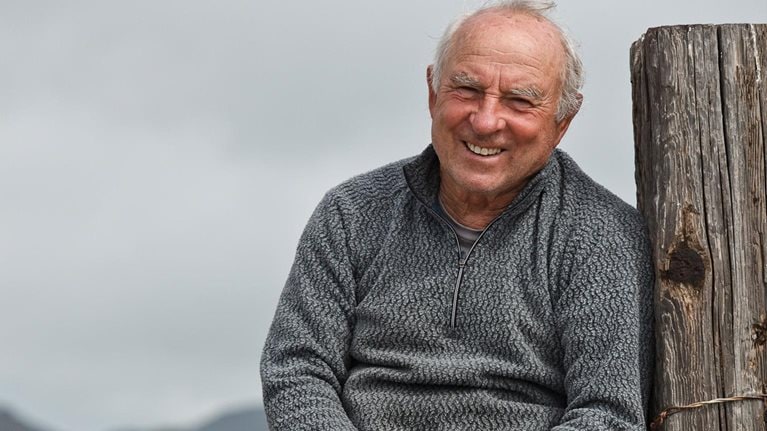The latest report from the United Nations Intergovernmental Panel on Climate Change (IPCC) has provided us with yet more urgent insights into the global climate crisis.1 While the report details the potentially devastating consequences of failing to take action, it also highlights interventions that can be taken by governments, civil society, and business to protect the planet in the future. What is clear is that the success of any climate or nature-positive action hinges on collaboration, coordination, and enhanced access to finance and technology—and that this typically requires capable organizations to act as bridges between corporations, sectors, governments, and funders.
The Nature Conservancy (TNC), a non-governmental organization (NGO), is one such bridge. Founded in 1951, the organization operates in 79 countries and territories, and has set ambitious goals to tackle climate change and biodiversity loss. It also innovates financial approaches that coordinate private and public actors to achieve benefits for nature and communities.
McKinsey’s Tony Hansen spoke with Jennifer Morris, CEO of TNC, about the leading role NGOs can play in building these bridges, and the actions the organization is taking to secure a sustainable future for all. An edited version of their conversation follows.
McKinsey: How is The Nature Conservancy tackling climate change and biodiversity loss?
Jennifer Morris: The Nature Conservancy got its start in New York in 1951, when a small group of volunteers banded together to protect a piece of old growth hemlock forest. Since then, approaches to conservation have evolved, growing in complexity. Increasingly grounded in science, conservation has experienced a shift—from protecting nature from people to protecting nature for people.
Today, it is widely recognized that nature itself holds the transformative potential to protect people and the planet from the worst effects of the climate emergency and biodiversity loss. This inspires us at The Nature Conservancy to increase our ambition—and the ambition of others.
We are doing this with a bold set of goals. By 2030, we aim to sequester three billion metric tons of carbon dioxide emissions annually—the equivalent of taking 650 million cars off the road every year. We are also working to conserve 10 percent of the ocean, 650 million hectares of land (approximately twice the area of India), one million kilometers of river, and 30 million hectares of lakes and wetlands (an area about the size of the Great Barrier Reef). Through these efforts, we will be able to help 100 million people at severe risk of climate-related emergencies and support the leadership of the 45 million people from local and indigenous communities whose lives depend on healthy oceans, fresh water, and land.
McKinsey: Where can NGOs make the biggest contribution to realizing a nature-positive, net-zero transition?
Jennifer Morris: When civil society convenes governments, corporations, and multinational organizations around real solutions, it benefits everyone. This coordination is where NGOs can make their biggest contribution. At TNC, our partnerships are grounded in science and informed by local communities. About 18 percent of our team members are scientists who are directly involved in the research, field work, and program design that positions us to guide governments and institutions—from pledge to implementation.
When civil society convenes governments, corporations, and multinational organizations around real solutions, it benefits everyone.
McKinsey: Throughout your career, you have focused on green business building to protect nature and improve the livelihoods of communities that are linked to natural resources. Why is this approach effective and what else is required to ensure long-term, positive socioeconomic outcomes for communities?
Jennifer Morris: As I have mentioned, everyone needs to be at the table. Corporate partners and the private sector are critical if the behavior change we need is going to be scaled. So, engaging directly with our corporate partners is a powerful lever that can help us look not only at new conservation opportunities but also, and more importantly, ways to change business practices. These include transforming supply chains, monitoring global practices more closely, and shifting narratives with better storytelling.
TNC has made huge strides with this strategy. I am very proud of our work with the Republic of the Marshall Islands in setting up Pacific Island Tuna in 2021. Using best-in-class electronic monitoring, we helped transform the tuna supply chain through strict standards for sustainability. This creates direct local jobs—40 percent of net profits are reinvested in community sustainable development. So far, 15 million cans of tuna have been sold across the United States with our partner, Walmart.2
To scale this type of work we need better policies, standards, and regulatory enforcement. A good example of progress in these fields is the work being done by the Taskforce on Nature-related Financial Disclosures (TNFD). The TNFD is putting into place a risk-management and disclosure framework so that we have the collective participation and overall transparency we need to bring businesses on board with nature-positive practices.
McKinsey: What are three of the most innovative conservation financing approaches that TNC is pursuing, and why do they have the potential to scale?
Jennifer Morris: The biggest challenge in addressing the crises in climate and biodiversity is figuring out how to pay for them. In our more than 70-year history, we have financed incredible work through the support of philanthropic donations and creative partnerships with both public and private entities. But to roll out the science-backed solutions needed to protect people, places, and livelihoods at scale—and to do it quickly—we must leverage market forces that unlock funding at a scale equal to the need.
There are a growing number of financing initiatives with the potential to scale conservation and climate action. I want to highlight three.
First, helping developing countries refinance pre-existing expensive sovereign debt. Since 2010, public debt in developing countries has doubled, and currently more than 30 sovereigns face market rates exceeding 10 percent (or are in default). By helping countries refinance unsustainable commercial debt with more affordable new loans that we risk-mitigate through multilateral partners, we can create long-term, reliable financing for marine, terrestrial and freshwater protection, and climate mitigation and adaptation. To date, we have refinanced over $700 million in the Seychelles, Belize, and Barbados, while unlocking more than $200 million in long-term conservation funding, which allowed these countries to make credible commitments to protect up to 30 percent of their oceans. We have a robust portfolio of promising sovereign opportunities in Africa, Asia, and the Americas, across various biomes.
Read more about Natural Capital and Nature
Second, the Project Finance for Permanence (PFP) model being used to create long-term conservation agreements. Creating lasting conservation projects requires a dedication to working alongside indigenous peoples and local communities. It also requires durable financing and partnerships that benefit cultures, economies, health, jobs, and future generations. PFP is a financial model that brings together governments, Indigenous People and Local Community (IPLC) funders, and other partners to secure long-term conservation through a single, transformative agreement. McKinsey has been an instrumental pro bono partner in the Enduring Earth collaboration—which has already conserved more than 120 million hectares across six countries using the PFP approach.3
Third, insurance for nature. Coastal areas worldwide are increasingly at risk from intense storms, rising sea levels, erosion, and the other impacts of climate change. Based on our research proving the economic benefits to coastal communities of protecting and restoring reefs, we have worked with partners to create innovative insurance policies that enable the rapid reconstruction of reefs following catastrophic storms—unlocking scaled, timely funding for conservation.
McKinsey: What message or call to action would you like to share with our readers?
Jennifer Morris: The first message that everyone needs to hear is that time is up—the urgency to act cannot be overstated. Every incremental degree and every species lost matters. We are already feeling the effects of the climate crisis, in some areas more than others.
The first message that everyone needs to hear is that time is up—the urgency to act cannot be overstated.
To turn the tide, more money—from both the public and private sectors—must be spent in the right places. By working with investors, lenders, and companies to identify the economic value of nature, we can secure financing and investments that increase the benefit for people and nature. We urgently need to close an annual $700 billion financing gap by identifying and implementing innovative financing and policy mechanisms that can rapidly mobilize substantial amounts of funding and reform harmful subsidies.4
TNC has proven that, with enabling factors in place, these mechanisms for nature can be successful—but we cannot do it alone.5 We need governments, corporations, and major financial institutions to embrace new approaches as well. I am issuing a call to action to leaders to join those who are already working with and for nature, to help people and communities thrive.


